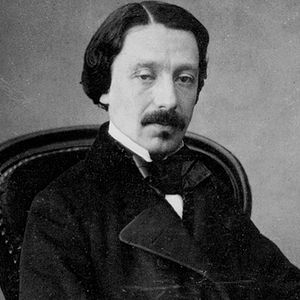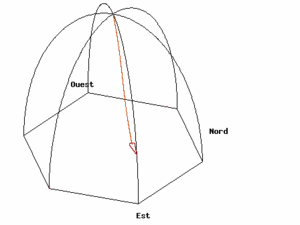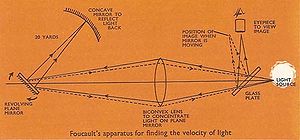Léon Foucault
Claimed by PierreR
Biography

Born Jean Bernard Léon Foucault, Foucault was born on September 18, 1819 to a Parisian publisher. Due to his family's education and access to resources, Foucault was home schooled for the majority of his childhood, before leaving home to study medicine. He quickly discovered that due to his blood phobia, medicine was not the field for him. In order to continue academic pursuits Léon began studies in physics. Initially focusing on optics, Foucault worked on photographic processes, before becoming an assistant to Alfred Donné, working with microscopic observation.
After finishing his term with Alfred Donné, Léon partnered with Hippolyte Fizeau in order to study properties of visible light generated by the sun. In 1850 the two would conduct experiments detecting the speed of light through different mediums, effectively disproving Newton's theory of light, as well as determining the speed of light within 1% of the modern accepted value. His work with Pendulums would earn him further renown when, in 1851, he presented the Foucault pendulum, a simple experiment proving the rotation of the earth. The experiment' success and public appeal led Foucault to design a similar experiment with a device he would name the gyroscope. His work publicizing science, coupled with his work on light and optics would earn Foucault both the Royal Society's Copley award and a position at the Parisian Imperial Observatory in 1855.
At the Imperial Observatory Foucault would begin work studying magnets, eventually studying eddy currents, before returning to the field of optics. After designing a device to safely view the sun through a telescope, Foucault designed a method of testing the shape of mirrors in telescopes. IN his final years, Foucault returned to the Roman Catholic church, and later passed away due to multiple sclerosis on February 11, 1868.
Notable works
Foucault's Pendulum

Foucault's Pendulum is based on the premise that a free floating pendulum set in motion will maintain it's path in space with respect to the axis it rotates about. The design consists of a long pendulum fixed only in the z direction at the pivot, with large weight at the bottom. Once set in motion the pendulum would maintain it's plane of motion with respect to the top and bottom of the z-axis, the pivot and core of earth respectively. Tracing the path of the pendulum along the ground below it, however, will show, every except at the equator, a non linear path, indicating that the surface was rotating with respect to the plane of action of the pendulum.
Measurement of the speed of light

Working with Fizeau, Foucault designed a system to accurately measure the speed of light. Using a laser as a light source, beam was fired at a continuously rotating mirror, deflected to a second stationary mirror, back to the rotating mirror, and to the location of the laser. By measuring the distance from the projected beam from the source, and taking into account the distances involved along with the rate of rotation of the mirror, Foucault was able to predict the speed of light to be 298000 km/s, only 0.6% off from the modern accepted value for the speed of light.
Awards and Recognitions
- Copley Medal
- Member of the Royal Society
- Member of the Bureau des Longitudes
- Name Inscribed in the Eiffel Tower
- Officer in the Legion of Honour
- Asteroid 5668 Foucault named in his honor
See also
- Foucault's Pendulum
- Foucault-Fizeau Apparatus
References
http://www-history.mcs.st-andrews.ac.uk/Biographies/Foucault.html
http://www.famousscientists.org/leon-foucault/